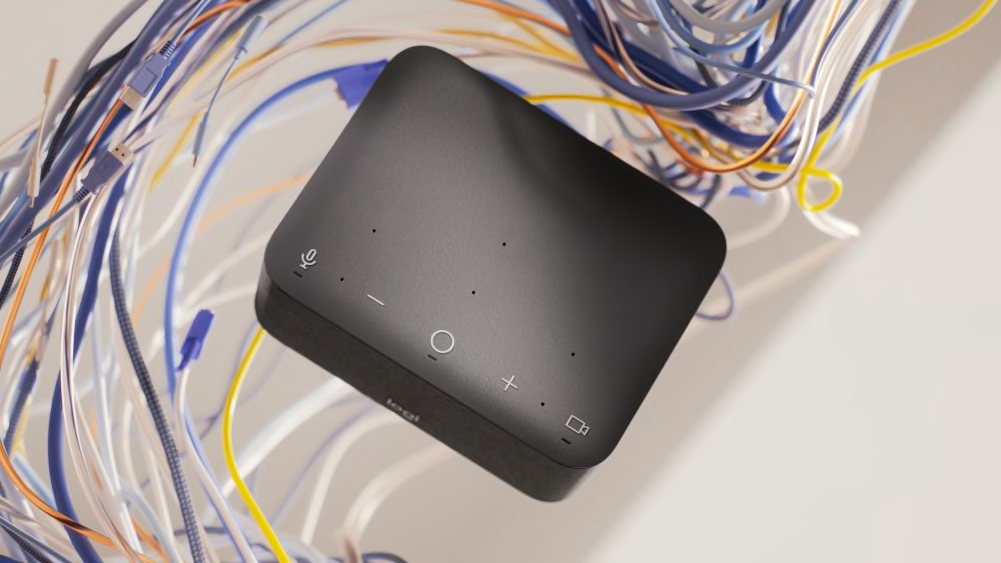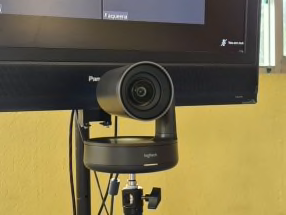Untangling the remote workers’ toolset
Curating IT-friendly collaboration tools that help remote teams thrive

The makeshift kitchen-table workspaces we threw together a year and a half ago won’t cut it in the era of long-term hybrid work. Today, employees need easy-to-use collaboration tools that don’t clutter their desks and minds.
At the start of the pandemic, it was an unfortunate necessity that everyone had to hastily purchase their own work-from-home devices without oversight from IT. Now that increasingly more organizations are announcing a switch to long-term remote or hybrid work, it’s time to clean up and optimize your team’s toolset for efficiency, security, and consistency.
But what tools do remote and hybrid workers really need? With so much advice floating around on the internet, it’s hard to separate the nice-to-haves from the must-haves. This guide will help you identify the essentials.
It’s time for IT to educate and empower employees
Ready or not, IT is evolving into an increasingly team-facing role that empowers teams to collaborate more efficiently and practice safe technology habits from anywhere. IT professionals can save their organizations time and money while also strengthening the team’s resilience to future hurdles— because whether it’s a multi-year public health crisis or just a few days without power in the office, it pays to be prepared.
By standardizing toolsets and training workers to use their devices wisely, IT can:
- Reduce support requests from employees struggling to use unapproved tools
- Stop the easily-preventable security breaches that occur when everyone brings their own devices.
- Streamline technology purchases, device setup, and integrations.
The question is, what tools do workers really need?
The era of curated IT
It’s clear that IT departments deployed what they could during the pandemic and provided far-reaching support as workers weathered extraordinary circumstances. Now as organizations shift into longer-term hybrid and remote work, it’s time to standardize and curate toolsets.
The more standardized everyone’s tools are, the easier it will be to get everyone up and running quickly, troubleshoot issues, and ensure that integrations work properly.
Everyone has their own preferences, however, so offering a curated selection of approved devices to choose from will ensure that everyone can work the way they want.

Must-have qualities for remote-friendly devices
- Frictionless setup: Every tool must be intuitive and simple to set up straight out of the box.
- Ability to update and troubleshoot remotely: IT should be able to push updates directly to devices without having to send countless reminder emails to employees.
- Modern, stylish appearance: Remote work tools should be designed for business, but looks still matter. Workers are more likely to regularly use tools with a premium look and feel.
- Distraction-proof: Not everyone has an isolated office space at home, so look for tools that allow users to quickly respond to distractions without fumbling for the right switch. Mute buttons and one-touch meeting controls should be prominent and easy to use.
- User-friendly software integration: Workers need the ability to personalize device settings like webcam brightness or microphone volume without creating support tickets. Look for tools with user-friendly software.
These essential devices help remote and hybrid workers thrive while working from anywhere
- Ergonomic mouse and keyboard: Hunching over a laptop for eight hours isn’t healthy. An ergonomic mouse can reduce hand muscle fatigue by 20 percent, while an ergonomic keyboard with a pillow rest can keep wrists in a natural, comfortable posture while typing.
- High-resolution webcam: If you want people to turn their cameras on during meetings, they’ll need an upgrade from their grainy built-in laptop camera. Look for devices that offer clear video and microphone audio, certifications for use with Zoom, Teams, and/or Google Meet, and a privacy shutter to use between calls.
- Docking station: Help employees eliminate excess wires and adaptors by providing a docking station with all the ports they need in one place. With the extra cables out of the way, everyone can stay organized and productive.
- Audio devices certified for collaboration: Consumer-grade headphones and speaker phones aren’t sufficient for work. They often lack helpful meeting controls, like a mute button for quickly silencing background noise. They also may not be certified to work with top video conferencing platforms, which can lead to setup issues and choppy audio. Choose devices that are purpose-built for remote work, and make sure headsets are comfortable to wear throughout long meetings.
More isn’t always better
Largely in response to the pandemic, tools have become increasingly more optimized for remote work. It’s easier than ever to find affordable, multifunctional devices that save deskspace and integrate smoothly with collaboration software. It’s no longer necessary to buy one of everything.
Though bring-your-own-device was a must last year, going forward, standardized and remote-optimized tool sets will reduce IT headaches and enable teams to thrive at work rather than simply get by. With a curated selection of IT-approved devices to choose from, everyone has a chance to customize their setup for collaboration, comfort, and style.
YOU MAY ALSO BE INTERESTED IN

Which Rooms bundle is right for your space?

Making Office Space Make Sense in a Remote World

Tunas Global School Boosts Remote Learning

Simplifying the Home Office Toolset in Complex Times
Browse Categories: